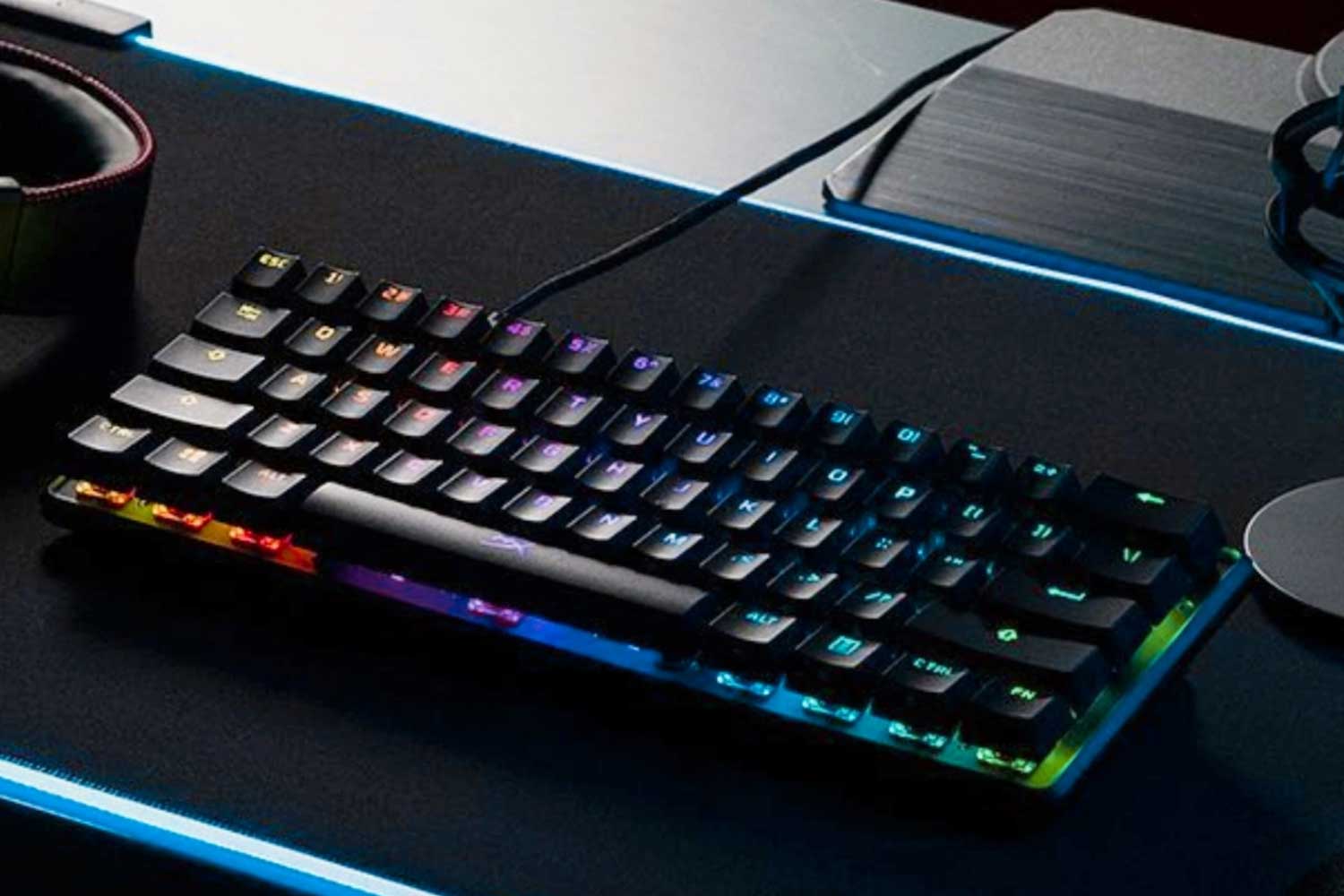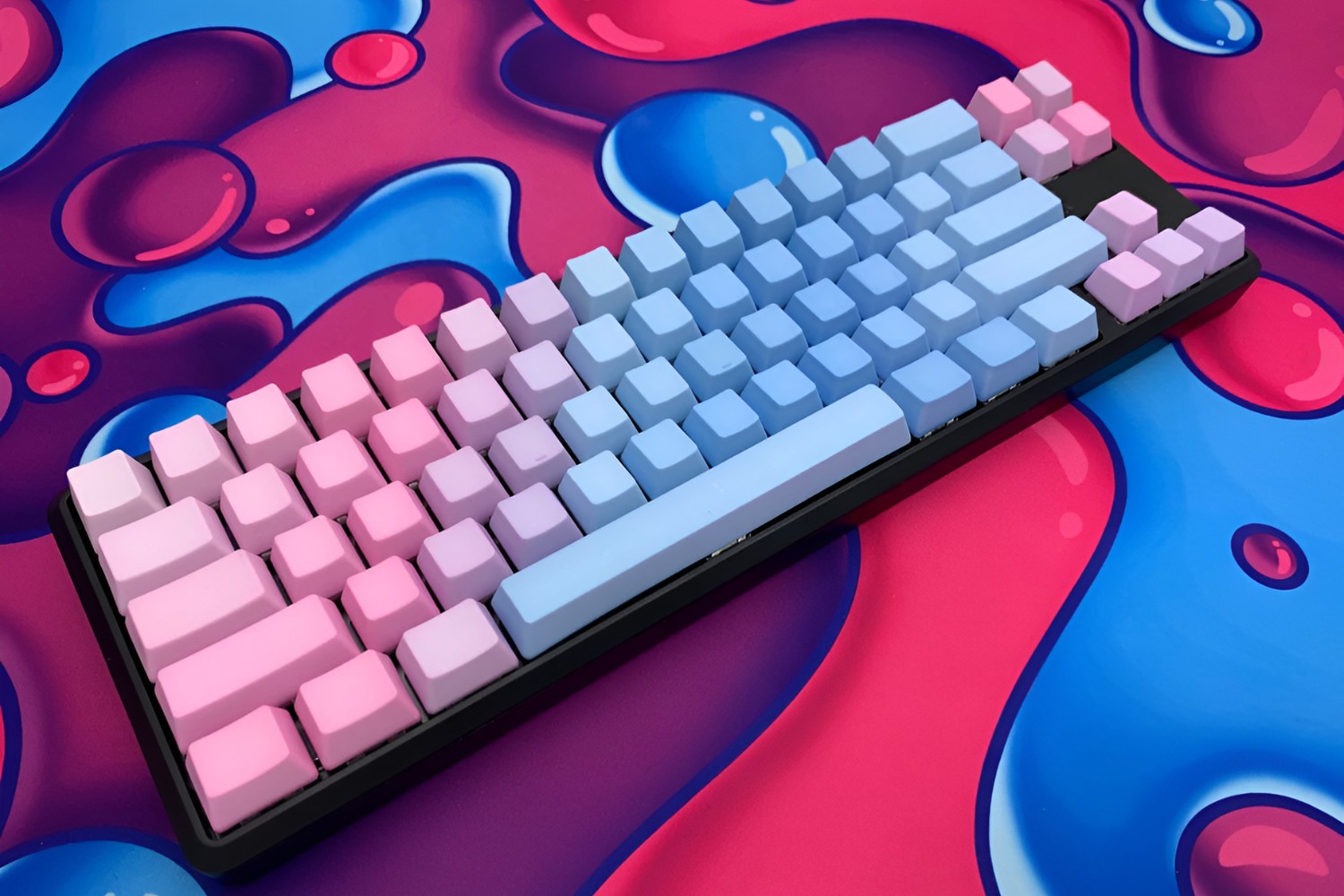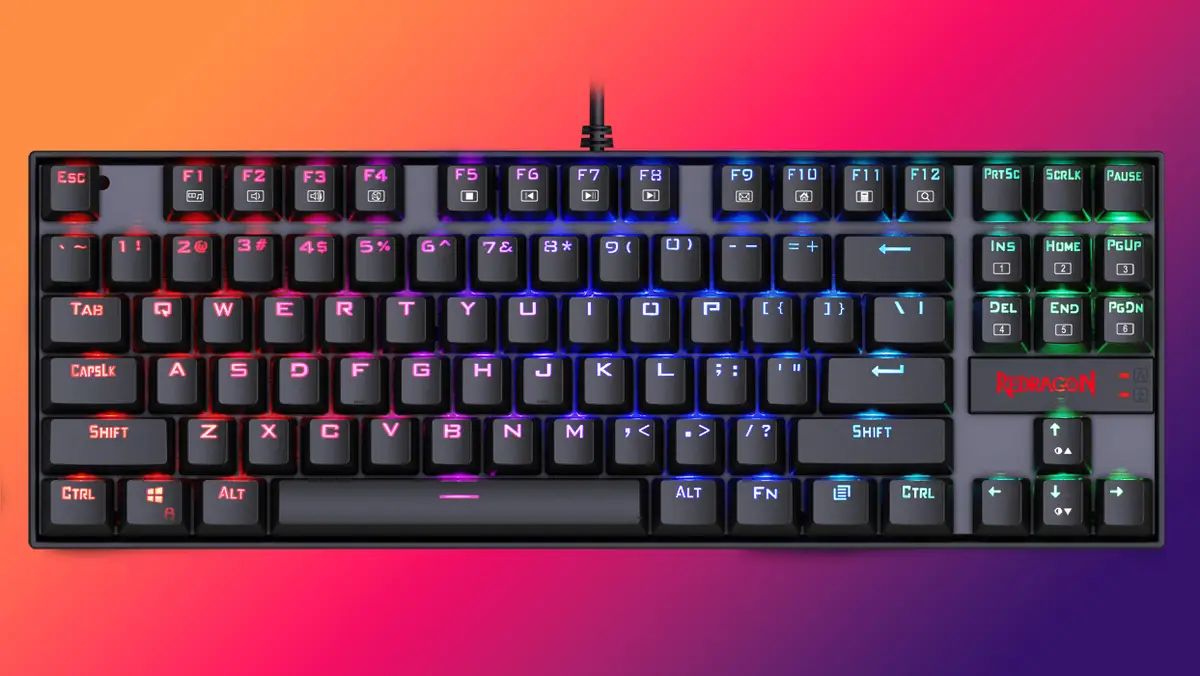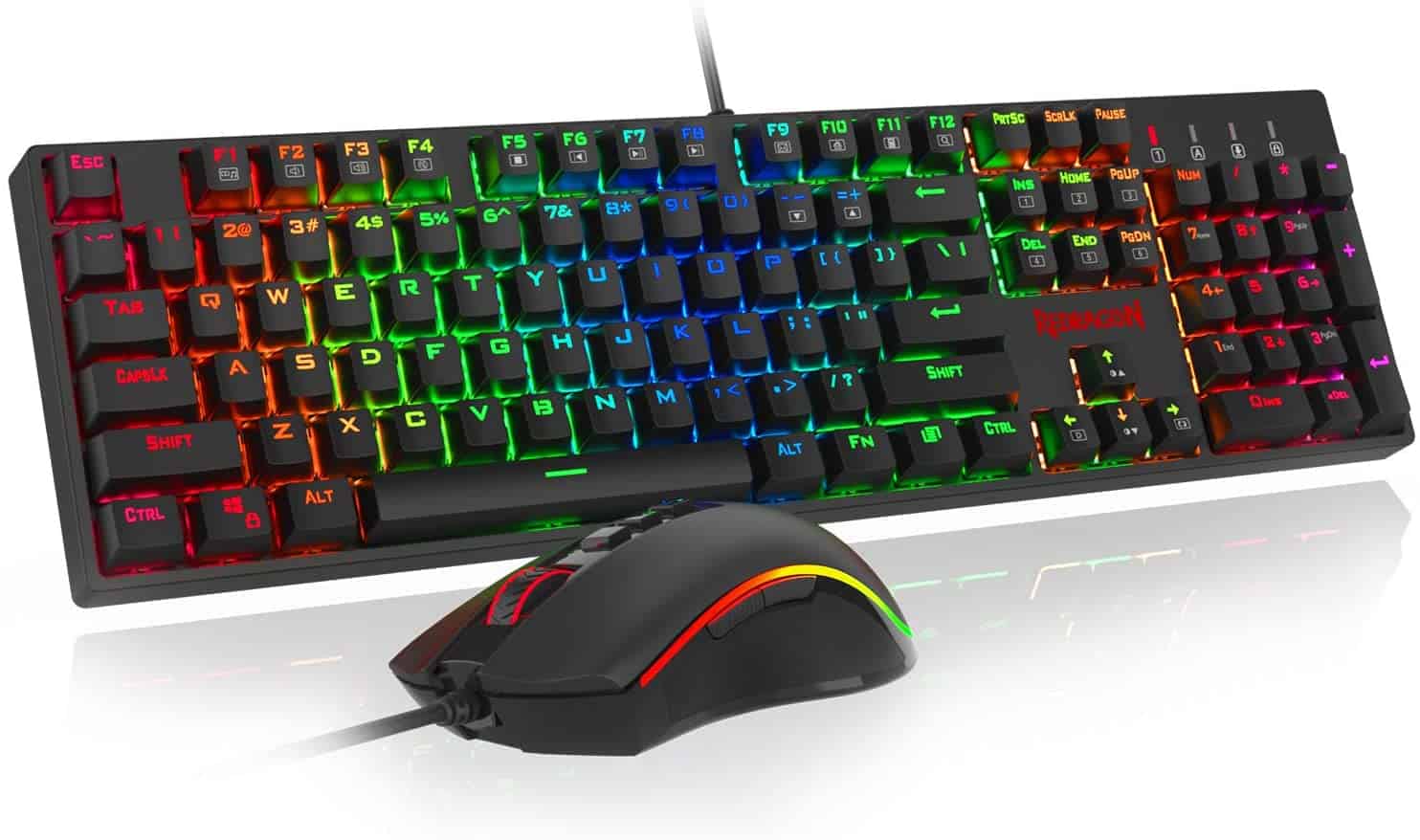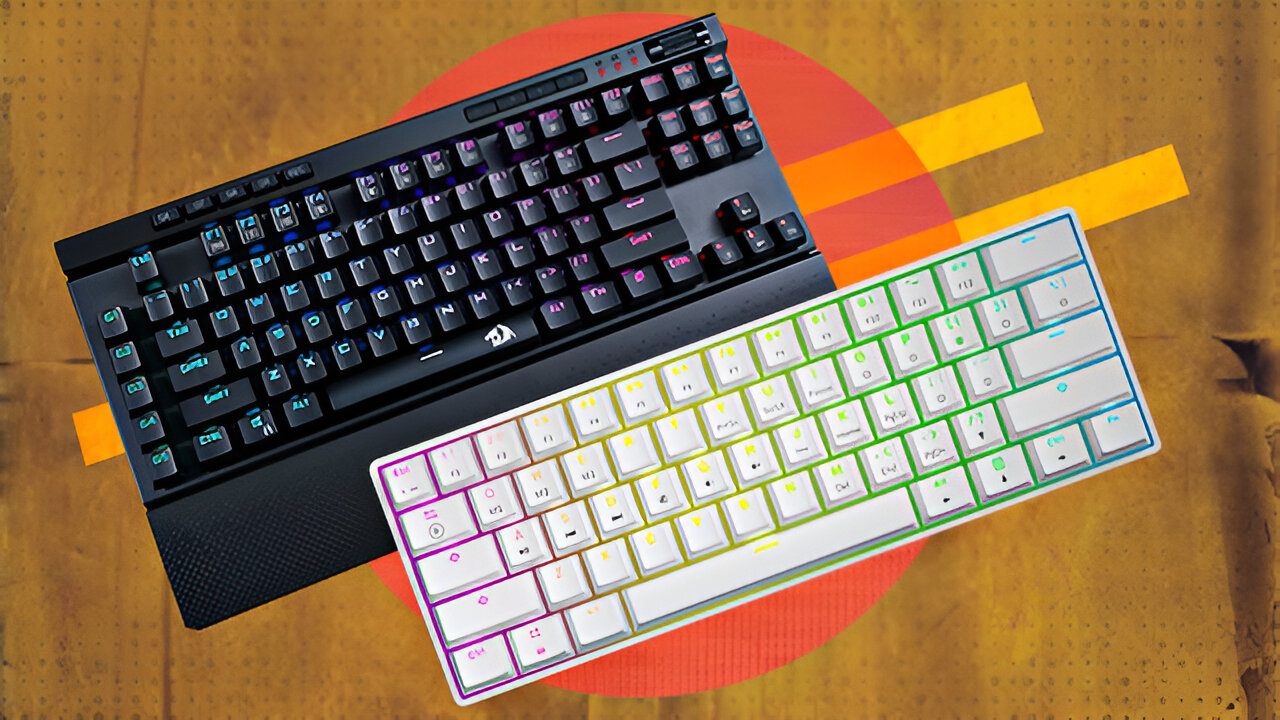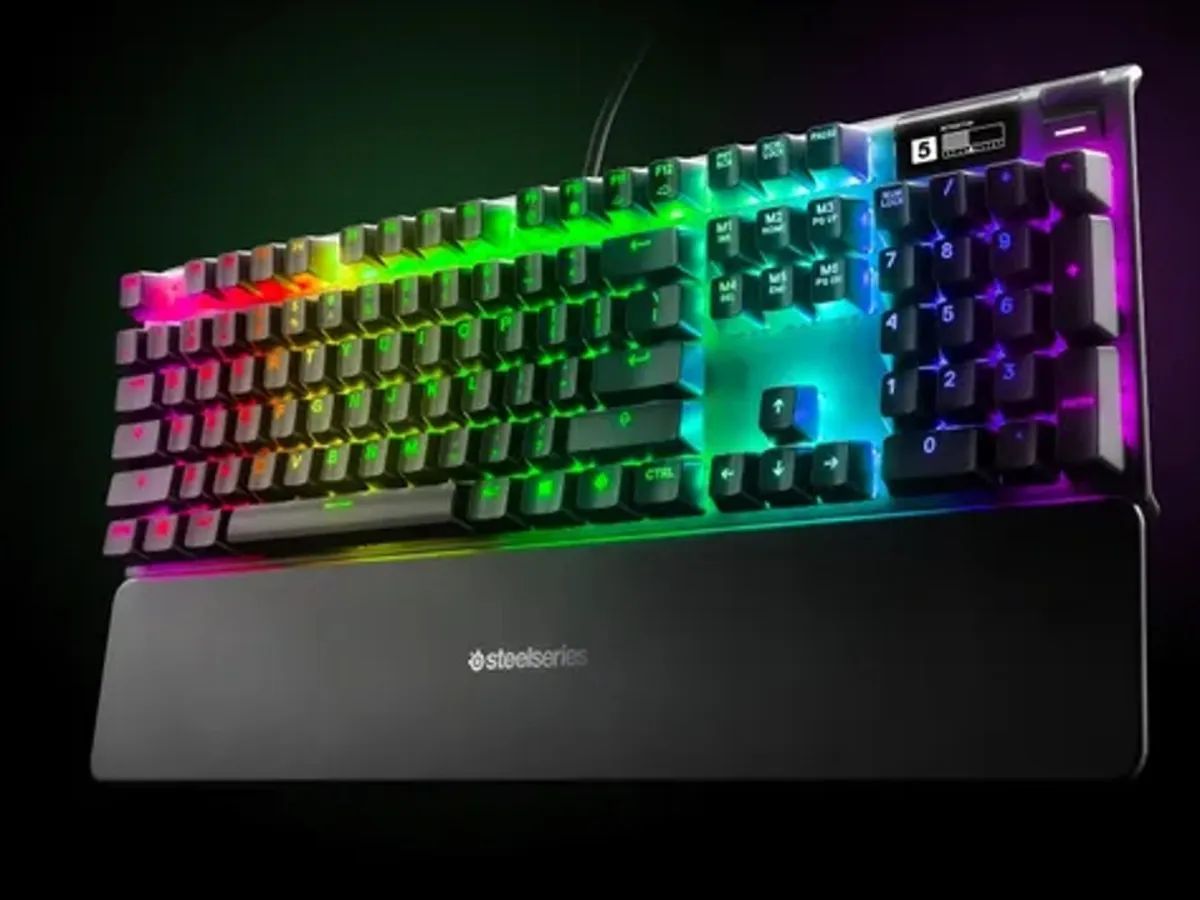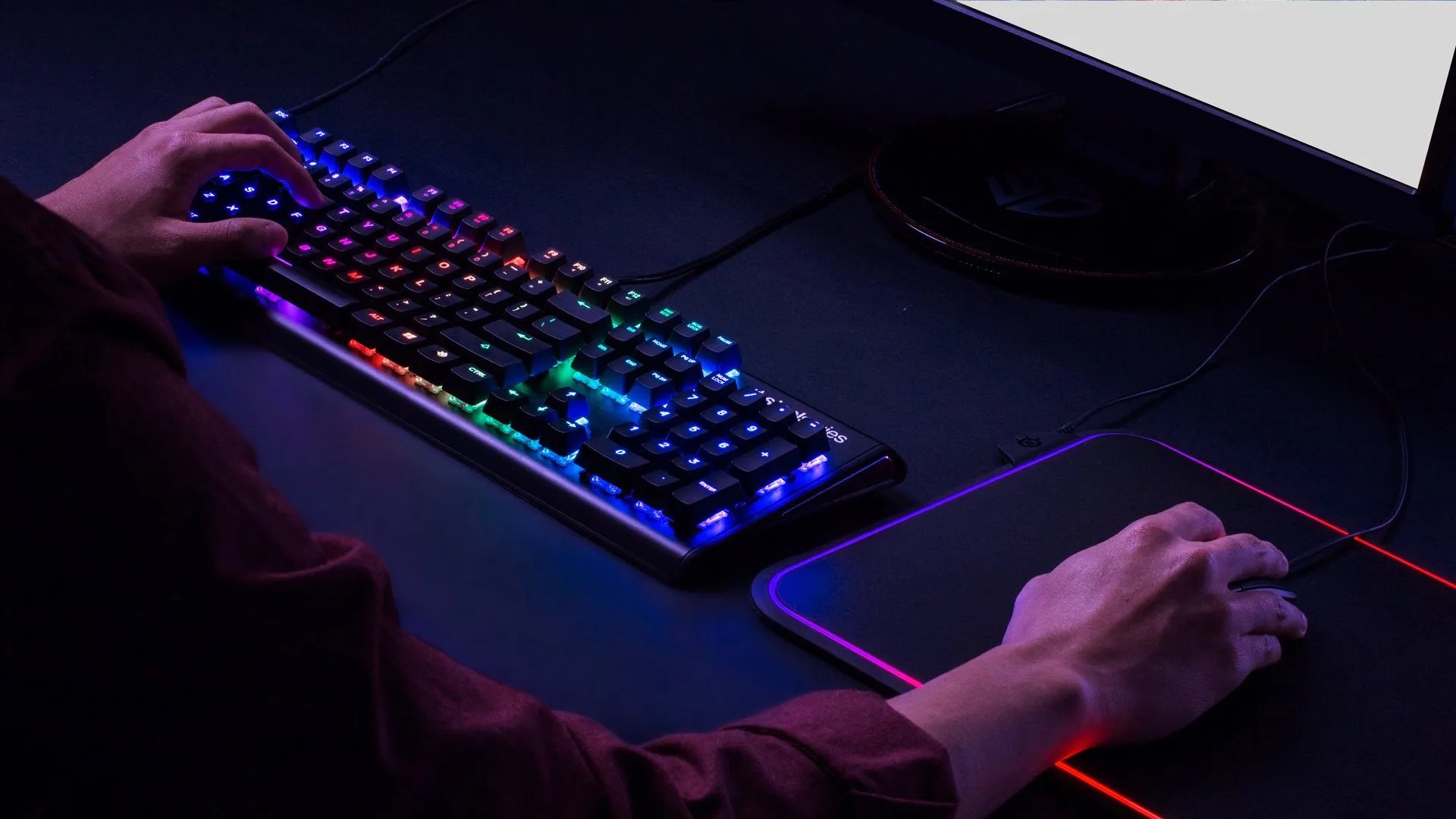Introduction
When it comes to computer peripherals, the keyboard is an essential tool for both work and play. However, not all keyboards are created equal, especially when comparing a gaming keyboard to a regular one. The differences between these two types of keyboards go beyond mere aesthetics, extending to functionality, performance, and user experience.
Gaming keyboards are specifically designed to meet the demands of avid gamers, offering features that enhance gameplay and provide a competitive edge. On the other hand, regular keyboards are typically tailored for general typing tasks and everyday use. Understanding the distinctions between these two keyboard variants is crucial for making an informed decision based on individual needs and preferences.
In this comprehensive guide, we will delve into the key disparities between gaming keyboards and regular keyboards, shedding light on their design, key switches, customization options, backlighting, pricing, and durability. By the end of this exploration, you will have a clear understanding of how these keyboards differ and which one may best suit your specific requirements. Let's embark on this enlightening journey to unravel the unique characteristics of gaming and regular keyboards.
Design and Build
The design and build of a keyboard play a pivotal role in determining its suitability for gaming or everyday use. Gaming keyboards often feature a robust and ergonomic design, with a focus on durability and performance. These keyboards are engineered to withstand the rigors of intense gaming sessions, incorporating materials that can endure frequent and prolonged use. Additionally, gaming keyboards may sport a more aggressive and futuristic aesthetic, catering to the preferences of gaming enthusiasts.
In contrast, regular keyboards prioritize simplicity and practicality in their design. They are typically lightweight and compact, making them well-suited for office environments and general computing tasks. The emphasis on portability and minimalistic design sets regular keyboards apart from their gaming counterparts, reflecting their intended purpose of facilitating everyday typing and data entry.
Furthermore, gaming keyboards often integrate additional features such as wrist rests, macro keys, and dedicated media controls to enhance the gaming experience. These ergonomic elements contribute to prolonged comfort during extended gaming sessions and provide quick access to essential functions without disrupting gameplay. Regular keyboards, while functional, may lack these specialized features, focusing instead on providing a straightforward and uncluttered typing interface.
When comparing the build quality, gaming keyboards are engineered to endure the demands of intensive gaming, featuring reinforced keycaps and sturdy construction to withstand repetitive key presses. Conversely, regular keyboards prioritize a balance of affordability and functionality, often using standard keycap materials and a more lightweight build suitable for typical office or home use.
Key Switches
The key switches of a keyboard are a defining factor in its performance and tactile feel. Gaming keyboards commonly utilize mechanical switches, which offer distinct tactile feedback and audible clicks. These switches are favored by gamers for their precision and responsiveness, providing a satisfying typing experience and improved keystroke accuracy. Moreover, mechanical switches are known for their durability, with some variants rated for tens of millions of keystrokes, ensuring longevity and consistent performance for avid gamers.
On the other hand, regular keyboards often employ membrane or scissor-switch key mechanisms. Membrane keyboards feature a rubber dome membrane under the keys, offering a quieter typing experience and a softer keystroke feel compared to mechanical switches. While membrane keyboards are cost-effective and suitable for general typing tasks, they may lack the tactile feedback and durability associated with mechanical switches, making them less favored by gaming enthusiasts.
Another notable aspect of key switches is the actuation force, which refers to the amount of pressure required to register a keystroke. Gaming keyboards frequently offer customizable actuation settings, allowing users to adjust the actuation point to suit their preferences and gaming style. This level of customization enables gamers to fine-tune the responsiveness of their keyboard, potentially enhancing their gaming performance and comfort during extended play sessions.
Additionally, the key switch design directly influences the keyboard’s anti-ghosting and n-key rollover capabilities, crucial for registering multiple simultaneous key presses in fast-paced gaming scenarios. Mechanical switches, renowned for their anti-ghosting properties, excel in delivering precise input recognition, a sought-after feature in competitive gaming environments. Regular keyboards, while functional for standard typing tasks, may not prioritize advanced anti-ghosting technology, potentially limiting their suitability for gaming activities that demand rapid and complex key combinations.
Customization and Programmable Keys
Gaming keyboards are renowned for their extensive customization options and programmable keys, empowering users to tailor their keyboard settings to suit specific gaming preferences and play styles. These keyboards often feature dedicated software that allows for the creation of custom macros, key remapping, and personalized RGB lighting profiles. The ability to assign complex macros to individual keys or create intricate combinations of keystrokes provides gamers with a competitive advantage, streamlining in-game actions and enhancing overall efficiency.
Furthermore, gaming keyboards frequently offer onboard memory or cloud synchronization capabilities, enabling users to store and access their custom profiles across different gaming setups. This level of flexibility ensures that personalized settings and macros remain consistent, regardless of the gaming environment, enhancing convenience and adaptability for avid gamers.
In contrast, regular keyboards typically offer limited or no programmable features, as they are primarily designed for standard typing and general computing tasks. While some productivity-focused keyboards may include customizable shortcut keys for common functions, the level of customization and programmability is generally more restricted compared to gaming keyboards.
Moreover, gaming keyboards often integrate dedicated macro keys or additional function keys that can be programmed to execute complex sequences of commands with a single keystroke. These macro keys serve as valuable tools for gamers, enabling swift and precise execution of in-game actions, from spell combinations in MMORPGs to rapid weapon switches in first-person shooters.
Additionally, the inclusion of customizable RGB lighting on gaming keyboards allows users to personalize the visual aesthetics of their setup, creating immersive lighting effects and color schemes that complement their gaming environment. This level of customization extends beyond mere visual appeal, as dynamic lighting profiles can be synchronized with in-game events or used to convey vital gaming information, enhancing the overall gaming experience.
Backlighting and RGB Lighting
One of the distinguishing features of gaming keyboards is the incorporation of advanced backlighting and RGB lighting systems, elevating the visual appeal and functionality of the keyboard. RGB lighting has become a hallmark of gaming peripherals, allowing for extensive customization and dynamic lighting effects that enhance the overall gaming ambiance.
Gaming keyboards often boast per-key RGB lighting, enabling individual keys to be illuminated in a spectrum of colors, thereby providing a visually striking and immersive experience. This level of customization allows gamers to create personalized lighting profiles, synchronize lighting effects with in-game events, and tailor the keyboard’s visual aesthetics to complement their gaming setup.
Moreover, RGB lighting on gaming keyboards is frequently accompanied by dedicated software that offers an array of lighting customization options, including dynamic color transitions, reactive lighting effects, and the ability to create intricate lighting patterns. These features not only enhance the visual appeal of the keyboard but also serve practical purposes, such as providing visual cues for in-game events or displaying real-time gaming information through intuitive lighting feedback.
In contrast, regular keyboards typically feature standard white backlighting or may forego backlighting altogether, focusing on functional simplicity rather than elaborate visual enhancements. While backlighting on regular keyboards serves the practical purpose of improving visibility in low-light environments, it often lacks the extensive customization and dynamic lighting capabilities found in gaming keyboards.
Furthermore, the integration of RGB lighting in gaming keyboards extends beyond mere aesthetics, as it can be leveraged to enhance gameplay immersion and functionality. For instance, certain gaming keyboards feature integration with popular games, allowing in-game events to trigger specific lighting effects on the keyboard, thereby providing visual feedback and enhancing the gaming experience.
Price and Durability
Price and durability are significant factors to consider when evaluating the differences between gaming keyboards and regular keyboards. Gaming keyboards, renowned for their robust construction and advanced features, often command a higher price point compared to regular keyboards. The premium pricing reflects the inclusion of mechanical key switches, advanced customization options, RGB lighting systems, and ergonomic design elements tailored to meet the demanding requirements of gaming enthusiasts.
While the initial investment for a gaming keyboard may be higher, the durability and longevity of these peripherals often justify the cost. Mechanical key switches, a common feature in gaming keyboards, are renowned for their durability and longevity, with some variants rated for tens of millions of keystrokes. This exceptional durability ensures that gaming keyboards can withstand the rigors of intense gaming sessions and prolonged usage, offering a long-term investment for avid gamers.
Regular keyboards, designed for general typing tasks and everyday use, are typically more budget-friendly, making them accessible to a broader range of users. The affordability of regular keyboards is attributed to their simplified design, membrane or scissor-switch key mechanisms, and absence of advanced gaming-centric features. While regular keyboards may offer practical functionality at a lower price point, they may not match the durability and specialized performance attributes of gaming keyboards.
Moreover, the durability of regular keyboards, particularly those featuring membrane key switches, may vary and is generally tailored to accommodate standard typing activities. While these keyboards are suitable for typical office or home use, they may exhibit signs of wear and reduced responsiveness over time, especially with prolonged and intensive usage.
When weighing the price and durability considerations, it is essential to assess individual requirements and usage patterns. Gaming keyboards, with their higher upfront cost and exceptional durability, present a compelling choice for dedicated gamers seeking a high-performance and long-lasting input device. Conversely, regular keyboards offer an affordable and practical solution for general computing tasks, prioritizing budget-consciousness and functional simplicity over advanced gaming features.
Conclusion
After exploring the distinct characteristics of gaming keyboards and regular keyboards, it is evident that these peripherals serve unique purposes and cater to different user preferences. Gaming keyboards stand out for their robust design, mechanical key switches, extensive customization options, advanced RGB lighting, and enhanced durability, making them ideal for avid gamers who prioritize performance, precision, and immersive gaming experiences.
In contrast, regular keyboards prioritize practicality, affordability, and simplicity, offering a functional typing interface suitable for everyday computing tasks in office, educational, and home environments. While regular keyboards may lack the advanced features and gaming-centric enhancements found in their gaming counterparts, they provide a budget-friendly and accessible input solution for a broad spectrum of users.
Ultimately, the choice between a gaming keyboard and a regular keyboard hinges on individual needs, usage scenarios, and personal preferences. For gamers seeking a competitive edge, tactile precision, and extensive customization capabilities, a gaming keyboard is a compelling investment that aligns with the demands of immersive gaming experiences. On the other hand, users primarily focused on standard typing tasks, productivity, and cost-effective solutions may find that a regular keyboard meets their requirements without the need for specialized gaming features.
By understanding the differences in design, key switches, customization options, backlighting, pricing, and durability, users can make informed decisions when selecting a keyboard that best suits their specific usage scenarios and aligns with their preferences. Whether it’s the tactile responsiveness of mechanical switches, the visual allure of RGB lighting, or the durability and ergonomic considerations, the diverse array of features offered by gaming and regular keyboards ensures that users can find a keyboard tailored to their unique needs.







